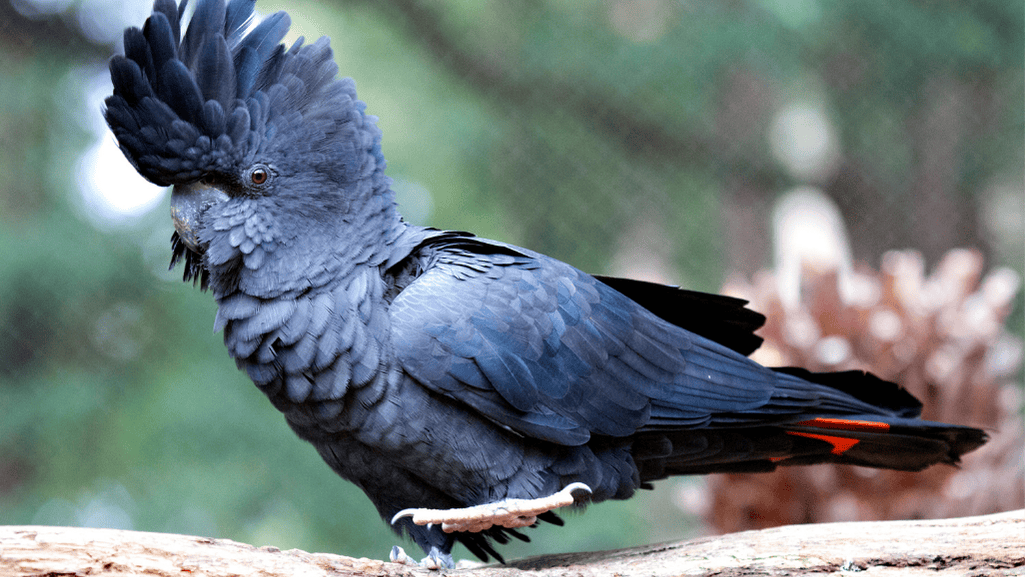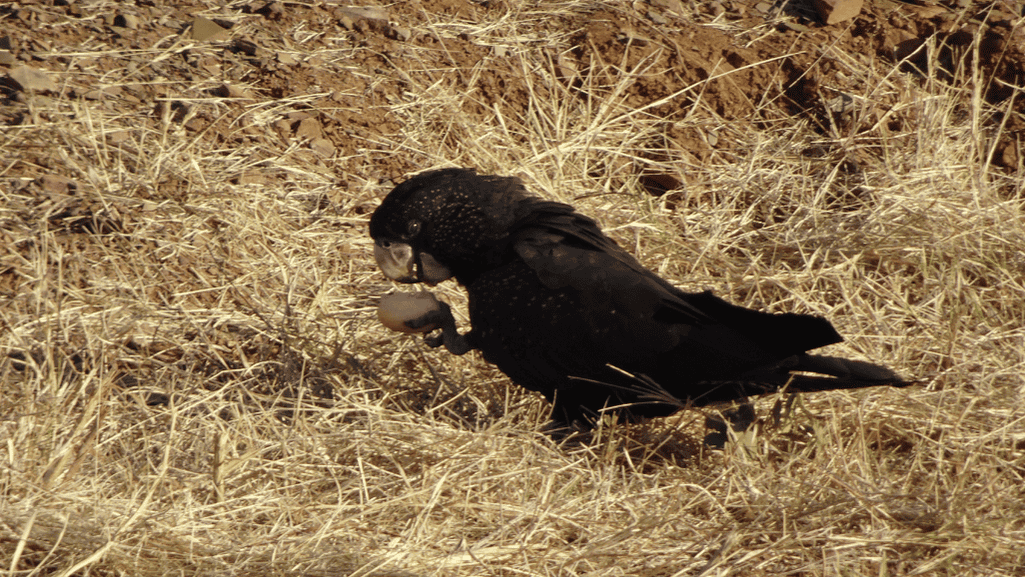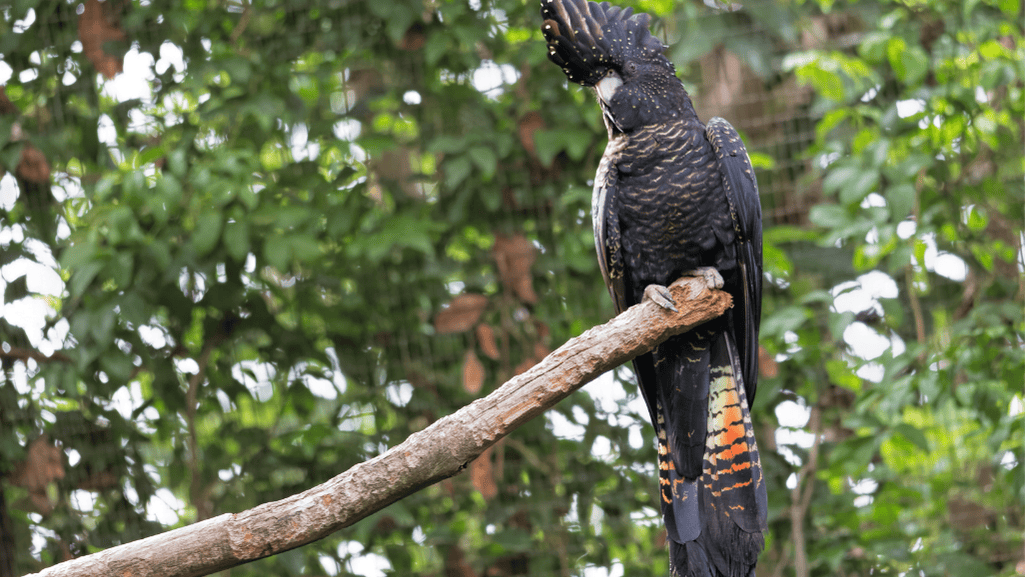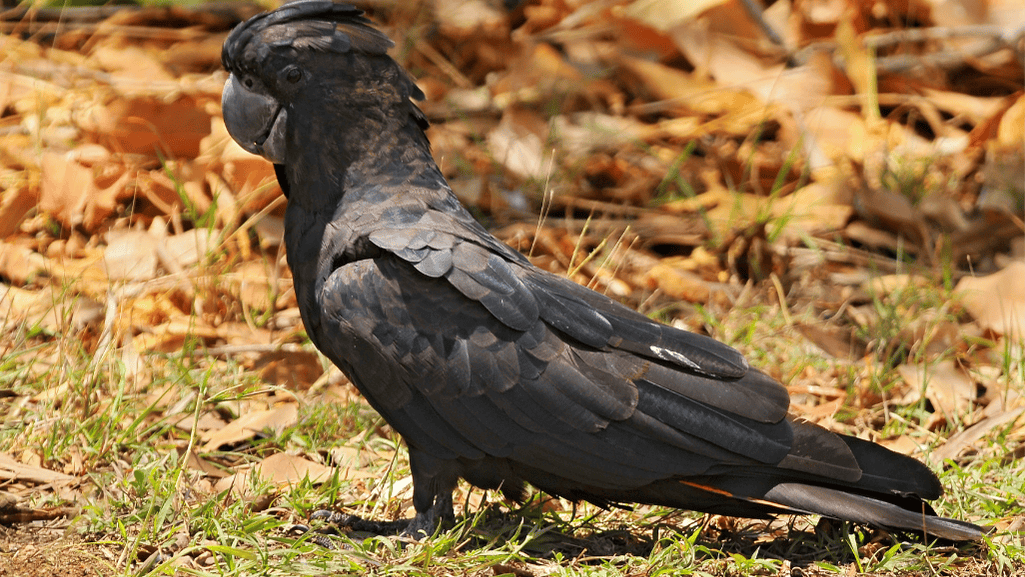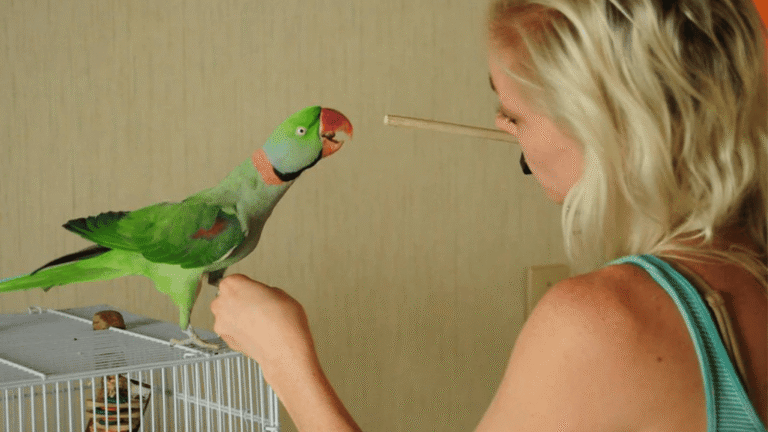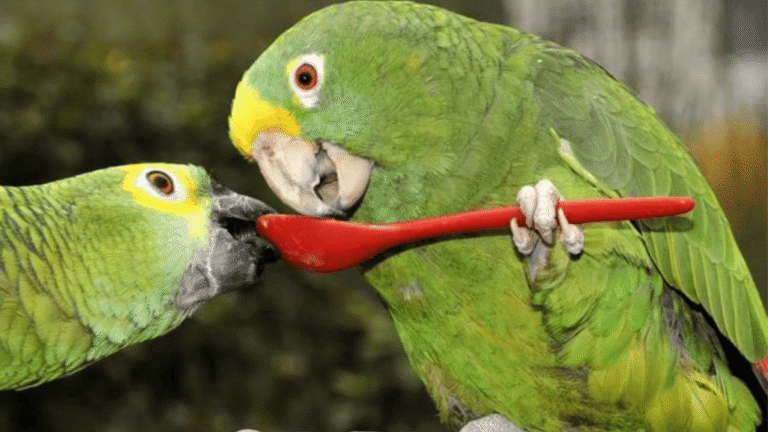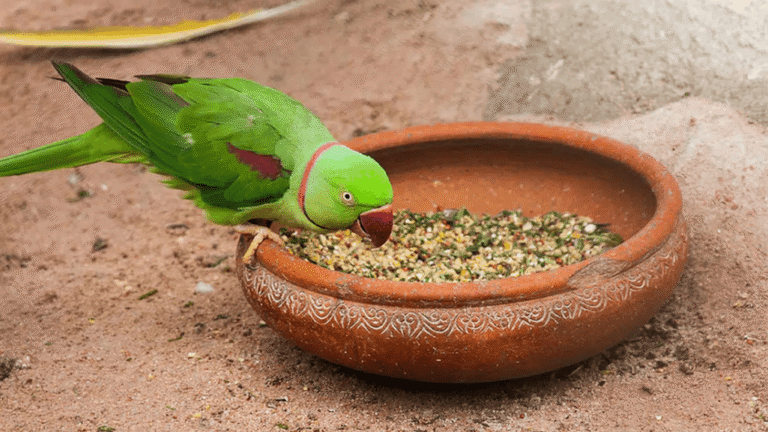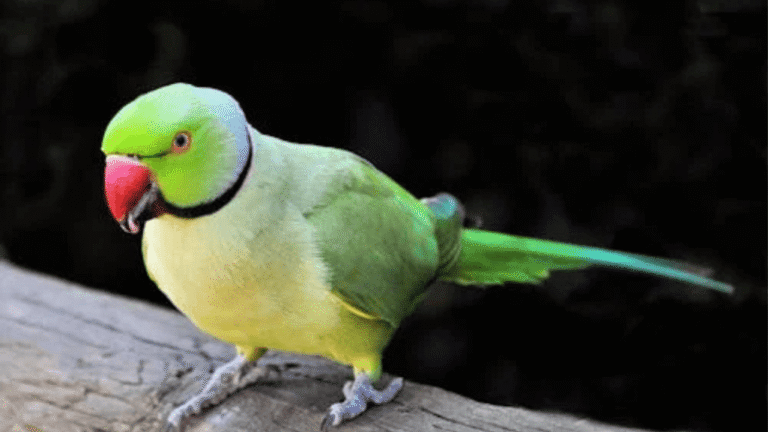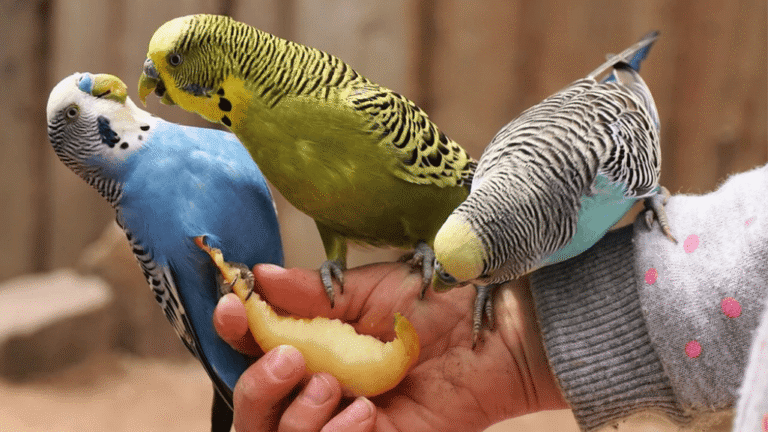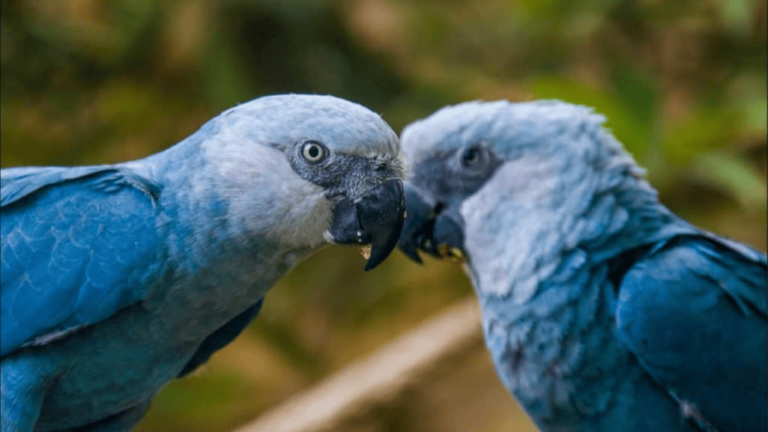When the sun breaks through Australia’s forests, the Red Tailed Black Cockatoo appears. It’s a symbol of Australia’s rich bird life. With its large wings and charming personality, it wins the hearts of bird lovers. Taking care of such an exotic bird is a big responsibility.
Even though they are listed as ‘Least Concern’ by the IUCN Red List, their well-being is a concern. Habitat loss and climate change are big worries. Creating a good home for them, like their natural habitats, helps them thrive.
Key Takeaways
- Five subspecies reflect the diversity of Red Tailed Black Cockatoos across Australian terrains.
- Eucalyptus-dominated landscapes form the backbone of their habitat, while a native seed-based diet underscores their role in the ecosystem.
- Understanding their migratory patterns is crucial for habitat preservation and wildlife conservation.
- Specific breeding and nesting behaviors are indicative of complex social structures that warrant mindful observation in captivity.
- The longevity of Red Tailed Black Cockatoos in captivity highlights the importance of tailored red tailed black cockatoo care.
- Conservation efforts, including breeding programs, are pivotal in protecting the threatened subspecies.
Discovering the Red Tailed Black Cockatoo
The Red Tailed Black Cockatoo is a stunning Australian parrot. It stands out with its unique feathers and has a rich history. Let’s look at the key moments and traits that make it special.
A Storied Past: The First Illustration by Sydney Parkinson
Sydney Parkinson, an artist on the Endeavour, first showed the world the Red Tailed Black Cockatoo. He worked with Joseph Banks, a famous naturalist. Parkinson’s drawing introduced the bird’s beauty and started a lasting interest in it.
This illustration was important. It showed the bird’s striking looks and marked a key moment in bird study. It helped start a tradition of research and admiration for these birds.
Distinctive Plumage: Male vs Female Characteristics
One interesting red tailed black cockatoo fact is the difference in their feathers. Males have a shiny black body with bright red on their tails. This makes them easy to tell apart from females.
Females have a mix of black and gray feathers. They also have yellow spots and orange-yellow bars on their body and tail. This unique look is important for finding a mate and for social life in their group.
Learning about these traits helps us understand and value the Red Tailed Black Cockatoo. It shows how important it is to Australia’s nature and its unique wildlife.
As we keep studying and protecting this beautiful parrot, the work of Sydney Parkinson and Joseph Banks is a guiding light. It inspires us to keep researching and caring for these amazing birds.
Habitat and Distribution Across Australia
The red tailed cockatoo habitat mainly covers Eucalyptus forests and woodlands in Australia. This shows how well the bird fits into Australian wildlife. These places are key for many birds, especially the red-tailed black cockatoo, for nesting and eating.
Keeping these habitats safe is vital for habitat preservation and avian species distribution. The red-tailed black cockatoo plays a big role in showing us why we need to protect these areas. It helps us understand the importance of these environments.
In Australia, the red-tailed black cockatoo lives in many places. Each area has its own special subspecies. This shows how well the bird can adapt to different climates and landscapes.
To learn more about this bird, including its different types and their homes, check out this detailed overview. It talks about the bird’s beauty and the need to save it. It also talks about the bigger picture of habitat preservation.
Experts and scientists work hard to protect these areas. They focus on creating safe spaces and using practices that don’t harm these important places. Their work is crucial for the red-tailed black cockatoo and other Australian wildlife to thrive for years to come.
The Diverse Diet of the Red Tailed Black Cockatoo
The feeding habits and cockatoo diet of the Red-tailed Black Cockatoo are key to understanding the species and its environment. This bird mainly eats eucalyptus seeds and other seeds from native Australian plants like banksias and casuarinas. Eating these seeds is not just a choice but a must, playing a big role in the ecosystem.
This black cockatoo species is vital in wildlife feeding through seed dispersal. They crack open hard nuts with their strong beaks, getting to the nutritious seeds inside. This helps spread seeds, aiding in habitat growth and diversity.
Red-tailed Black Cockatoos love high-fat seeds, fitting their high-energy flying lifestyle.
- High-fat nuts
- Eucalyptus cones
- Banksias
- Hakeas
- Casuarinas
Knowing how they eat is crucial for conservation. Losing trees like Bulokes and Stringybarks harms their food supply. Conservation efforts need these insights to help these birds survive in the wild and in recovery programs.
| Year | Population Estimate | Notes |
|---|---|---|
| 2002 | 785 | Initial high count observed |
| 2015 | 1500 | Approximate population boost |
| 2016 | 901 | Decline from previous year |
| 2017 | Increased barred birds | Potential successful nesting |
| 2018 | Decreased barred birds | Indicates reduced breeding success |
The changing numbers show how delicate their population is. It’s greatly affected by their ability to find enough food, like eucalyptus seeds, in their natural habitat.
Vocalizations and Communication
The world of bird communication is beautifully shown by the Red-tailed Black Cockatoo. This Australian native bird uses sounds for more than just noise. Their calls are complex signals that help them talk to each other in their groups.
The Red-tailed Black Cockatoo is known for its unique ‘kree’ sound. It sounds like a rusty windmill creaking. This sound is important for their community, helping them mark territory and stay together.
The Call of the Wild: ‘Kree’ and Rusty Windmill Sounds
The ‘kree’ call is key for these cockatoos. It helps them share where they are, who they are, and warn others of danger. This shows how complex bird communication can be.
These birds also make different sounds for different situations. They use soft calls when flying and loud ones to alert others from far away. This shows their smart use of sound in their environment.
Recent studies found that each bird might have its own unique call. This is like human fingerprints, helping them recognize each other. This highlights the complexity of their communication and their evolution in Australia’s diverse landscapes.
Learning about the Red-tailed Black Cockatoo’s communication helps us understand their behavior better. It shows how sound and behavior work together in these amazing Australian birds.
Understanding Red Tailed Black Cockatoo Behavior
Exploring the Red Tailed Black Cockatoo’s behavior reveals interesting insights into their lives. They have unique breeding and nesting habits. These are key for bird conservation and understanding their natural world.
Breeding Habits: Nesting and Courtship
Red Tailed Black Cockatoos have fascinating nesting rituals. They choose big trees like eucalypts for safety and a view. These trees are lined with wood dust for the eggs and chicks.
Their courtship is also interesting. Males show off to attract females. They make sounds and share food to strengthen their bond and help with raising chicks. This shows how important their breeding customs are.
Seasonal Movements in Response to Food Availability
Red Tailed Black Cockatoos move based on food availability. They travel long distances to find food. Their moves are not random but are based on food changes and weather.
They adapt to different environments by moving. This is crucial for their survival, especially with habitat loss and climate change.
Protecting the Red Tailed Black Cockatoo requires understanding their behavior. Conservation efforts need to focus on their migratory patterns and habitats. Every action helps ensure their survival.
Studying their behavior helps conservationists meet their needs. This is important for bird conservation efforts.
Cockatoo Care: Creating a Supportive Environment in Captivity
Keeping captive cockatoos happy requires careful planning and knowing their natural behaviors. Good captive bird care means having the right enclosure and plenty of activities.
Proper Housing: Enclosure Size and Features
Start with big, well-made enclosures for cockatoos. These should let them fly and move around, which is vital for their health. A good enclosure has different perch sizes, safe toys, and places to hide.
These features help mimic their natural home. It keeps them active and happy.
Captivating Enrichment: Toys and Social Interaction
Cockatoos are smart and love to be around others. They need lots of mental challenges and social time. Giving them toys like ropes and puzzles keeps them busy.
Playing with other cockatoos or people is also key. It helps prevent problems like feather plucking and too much talking.
Feeding them right and letting them bathe is also important. Misty water or shallow trays help them groom and stay moist. This is like their natural behavior near waterways in Australia.
To make a great home for a cockatoo, mix space, design, and social time. This ensures they live well, just like cockatoo care tips suggest.
Threats and Conservation Status
The red tailed black cockatoo conservation status shows the big challenges this endangered species faces. Mainly, it’s because of habitat loss and changes due to farming and logging. These birds face deforestation and struggle to find places to nest, made worse by illegal hunting and climate change.
The Forest Red-tailed Black Cockatoo is seen as ‘vulnerable’ by the Western Australian Government. Its numbers have dropped sharply, from a large population to about 15,000 birds in 2006. Timber cutting, woodchipping, and mining in their area have greatly reduced their habitat.
This species once went as far south as Sydney. It lives in fertile areas with forests and woodlands. These places are crucial but at risk from human actions.
Wildlife protection and conservation are key. They aim to save nesting sites and restore habitats. Teaching the community is also vital to stop more birds from being lost.
| Conservation Status | Population | Threats |
|---|---|---|
| Critically Endangered in NSW | Extremely low, with potential for extinction in NSW | Illegal shooting, habitat loss, climate change |
| Vulnerable (Western Australia) | 15,000 in 2006 | Agriculture, timber harvesting, mining |
Conservation for the red tailed black cockatoo is more than just saving them from extinction. It’s about keeping the balance in nature. It aims to help these birds and their environment thrive, even with ongoing threats.
Endangered Subspecies and Conservation Efforts
The endangered red tailed black cockatoo is a big challenge for Australia’s bird population. Some subspecies, like the Graptogyne, have seen their numbers drop a lot. This is because of habitat loss and their special needs.
Efforts to save these birds have been wide-ranging. They focus on recovery plans and protecting their homes. This is important because of the loss of habitat due to farming and cities growing.
Conservation programs are working hard to protect and restore habitats. They team up with groups like Birds Australia, local governments, and community groups. This teamwork has helped a lot in fighting the threats these birds face.
| Subspecies | Status | Population | Primary Threats |
|---|---|---|---|
| Calyptorhynchus banksii banksii | Critically Endangered | Low (in NSW) | Habitat fragmentation from agriculture |
| Graptogyne | Endangered | 1000 | Loss of specific Eucalyptus species |
| Forest Red-tailed (WA) | Vulnerable | Varied | Nesting hollow availability, habitat loss |
Modern ways of managing habitats have helped a lot. But, we need to keep working to protect these birds. Getting communities involved in conservation has really helped. It has raised awareness and helped with the recovery of these birds.
In short, we need to keep up the good work to save the endangered red tailed black cockatoo and its subspecies. With ongoing efforts in recovery plans and habitat management, we hope to turn things around for these amazing birds.
Interactive Experiences: Connecting with Red Tailed Black Cockatoos
Connecting with Australia’s native wildlife, like the Red Tailed Black Cockatoos, shows us why bird conservation is key. Interactive wildlife experiences teach us to respect these birds. Elvis, a famous Red Tailed Black Cockatoo, was born around 1980 and amazed people at the 1988 World Expo in Brisbane.
Birdwatching trips are more than fun; they teach us about the cockatoos’ conservation status. They help us understand the importance of protecting their habitats. For more on their habitats and conservation, check out this exhibit.
These interactive settings let us see their unique behaviors, like flying up to 70 KM per hour. They teach us to respect and care for these birds. Educational programs held in beautiful places show us how conservation helps our planet.
The Wildlife Habitat Port Douglas is a great place for learning. It hosts events like ‘Swim with the Salties’, teaching us about wildlife. We can see how cockatoos adapt and learn, like Sulphur Crested Cockatoos opening garbage bins in cities.
In summary, interactive wildlife experiences, birdwatching tours, and wildlife photography sessions are great ways to learn about Red Tailed Black Cockatoos. They teach us about bird conservation and the importance of protecting Australia’s natural heritage.
Conclusion
The Red Tailed Black Cockatoo is a stunning bird with unique plumage and a key role in Australian wildlife. It shows us how important red tailed black cockatoo care and conservation efforts are. We’ve learned about their diet, habitats, and behavior, highlighting the need for bird conservation.
We can help these birds by fighting against habitat loss and urban growth. Their ability to adapt and our growing understanding of their needs give us hope. This is crucial for their survival.
Since 2010, more Forest Red-tailed Black Cockatoos have been seen in urban areas. This is likely due to new food sources like Cape Lilac. However, the long-term effects are still unknown.
Their status as “near threatened” shows how fragile their existence is. Young cockatoos rely heavily on their parents. Yet, there’s hope thanks to conservation efforts and their importance in Aboriginal culture.
For more on why we need to protect these birds, read the genomic data analysis on their conservation. Research at Murdoch University, led by Professor Kris Warren and Simon Cherriman, is key. They work on raising awareness and studying these birds through projects like the “Black Cockatoo Crisis” documentary.
These efforts, along with tree plantations and wildlife health studies, are vital. They help ensure the Red Tailed Black Cockatoo can thrive despite challenges.


